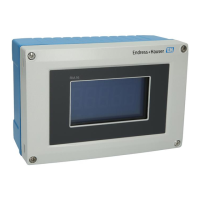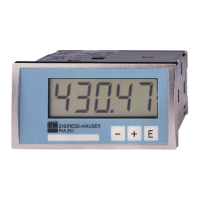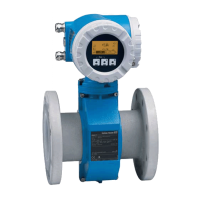Operating Instructions Raman Rxn2
42 Endress+Hauser
10.2 Servicing the Raman Rxn2 analyzer
Some of the service procedures require removal of the protective cover. Special precautions are therefore necessary to
deal with the added optical and electrical hazards that are present during service operations.
General users should not open the Raman Rxn2 enclosure due to potential exposure to hazardous laser
radiation or high voltages.
Only qualified personnel familiar with high voltage electronics should open the system enclosure to perform
necessary maintenance or service.
Raman RunTime also provides diagnostic information to help determine service required on the analyzer. Refer to
the System warnings and errors section of the Raman RunTime Operating Instructions (BA02180C) for additional
information.
For Technical Service, refer to our website (https://endress.com/contact) for the list of local sales channels in your
area.
Description (if applicable)
Raman spectra
contain
non-random
noise
The intensity
calibration file is no
longer valid
The intensity calibration file is a map of the total
instrument response of the system (CCD quantum
efficiency, grating and lens efficiencies, etc.).
If the spectrograph focal plane shifts with respect to
the CCD detector, then the intensity calibration map
is no longer correct. An incorrect intensity
calibration file will not remove pixel-to-pixel
sensitivity variation, which is as high as 3 % for some
CCD chips. Shifting of the spectrograph focal plane
on the CCD detector can result from adjusting the
Raman Rxn2 spectrograph alignment, mechanical
shock applied to the Raman Rxn2 or substantial
ambient temperature shifts.
Recalibrate the intensity
axis.
The intensity per pixel
per accumulation
exceeded the half-well
potential of CCD pixels
during the creation of
the intensity
calibration file
Non-linearity reduces the effectiveness of the
intensity calibration file at correcting the CCD pixel-
to-pixel sensitivity variation
Recalibrate the intensity
axis.
Intensities in
Raman spectra
show non-linear
behavior or
Raman peak
shapes are
distorted
The signal from the
CCD can become
slightly non-linear as
the photo-generated
charge approaches the
full-well potential.
This can cause non-linear behavior and peak
distortion in Raman spectra.
Repeat the data
acquisition using a
shorter data acquisition
time and perhaps more
accumulations (which
adds intensities in the
embedded software
rather than on the CCD
chip).
The intensity
calibration file is
invalid.
If the intensity calibration was made using a light
source that did not evenly illuminate the entire
collection lens of the spectrograph, then any
experiment that does not reproduce the exact uneven
illumination at the time of the intensity calibration
will not have the same instrument response and
therefore will not be properly corrected.
Recalibrate the intensity
axis.

